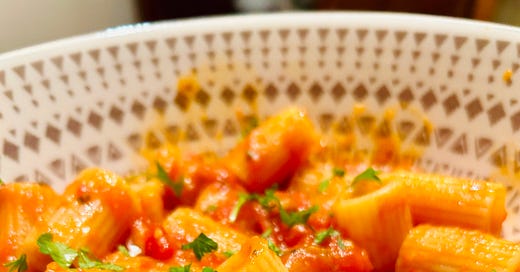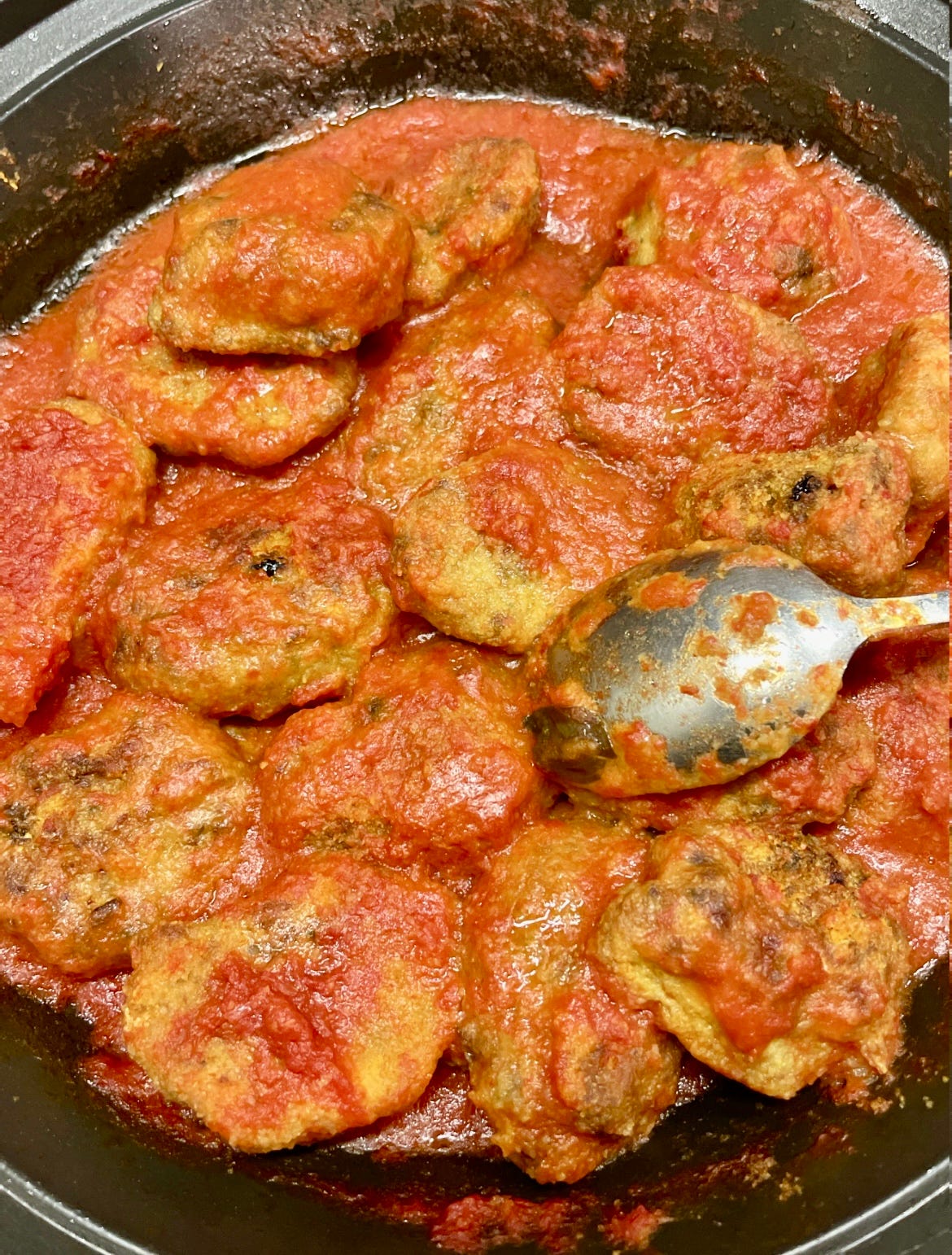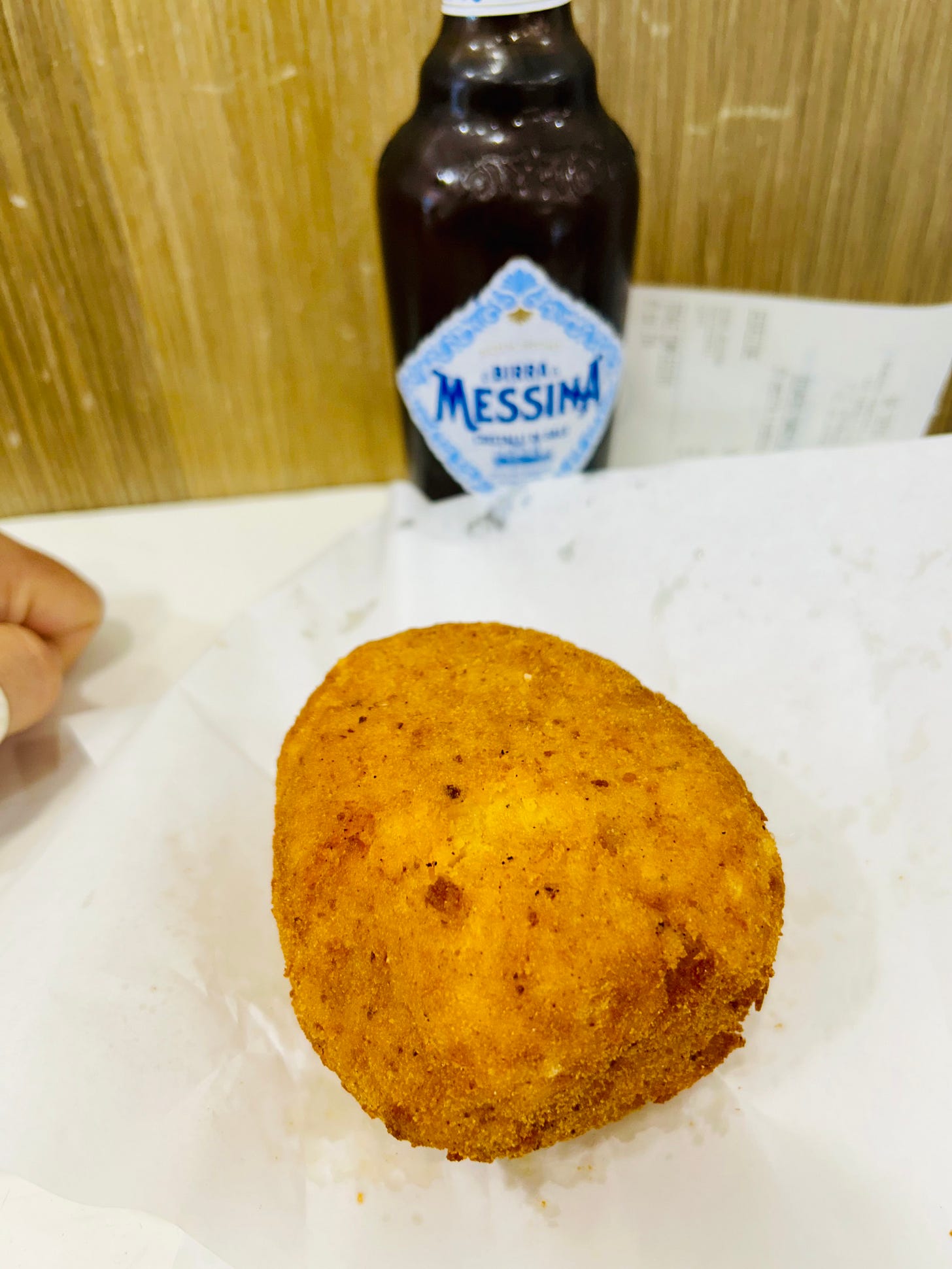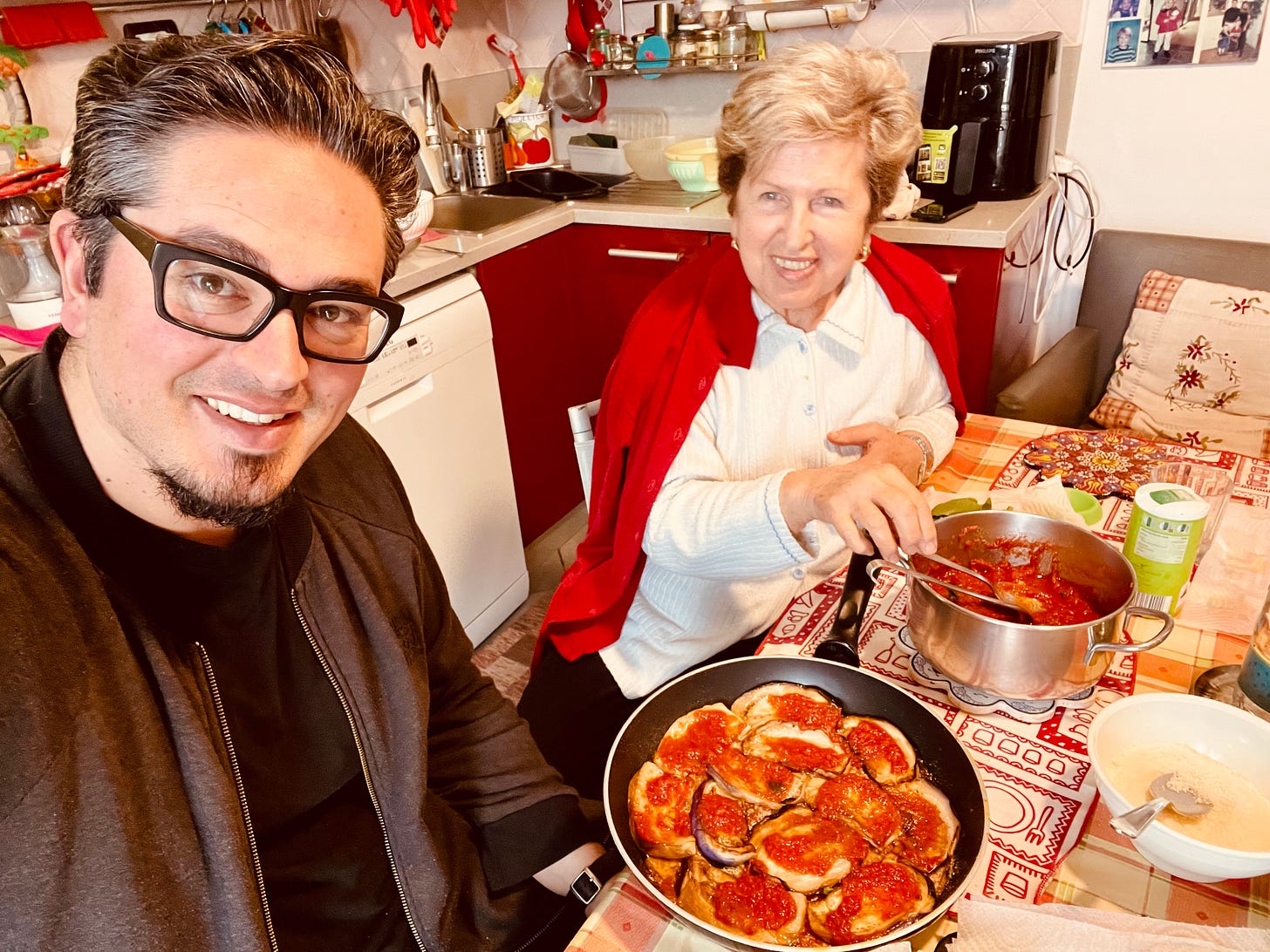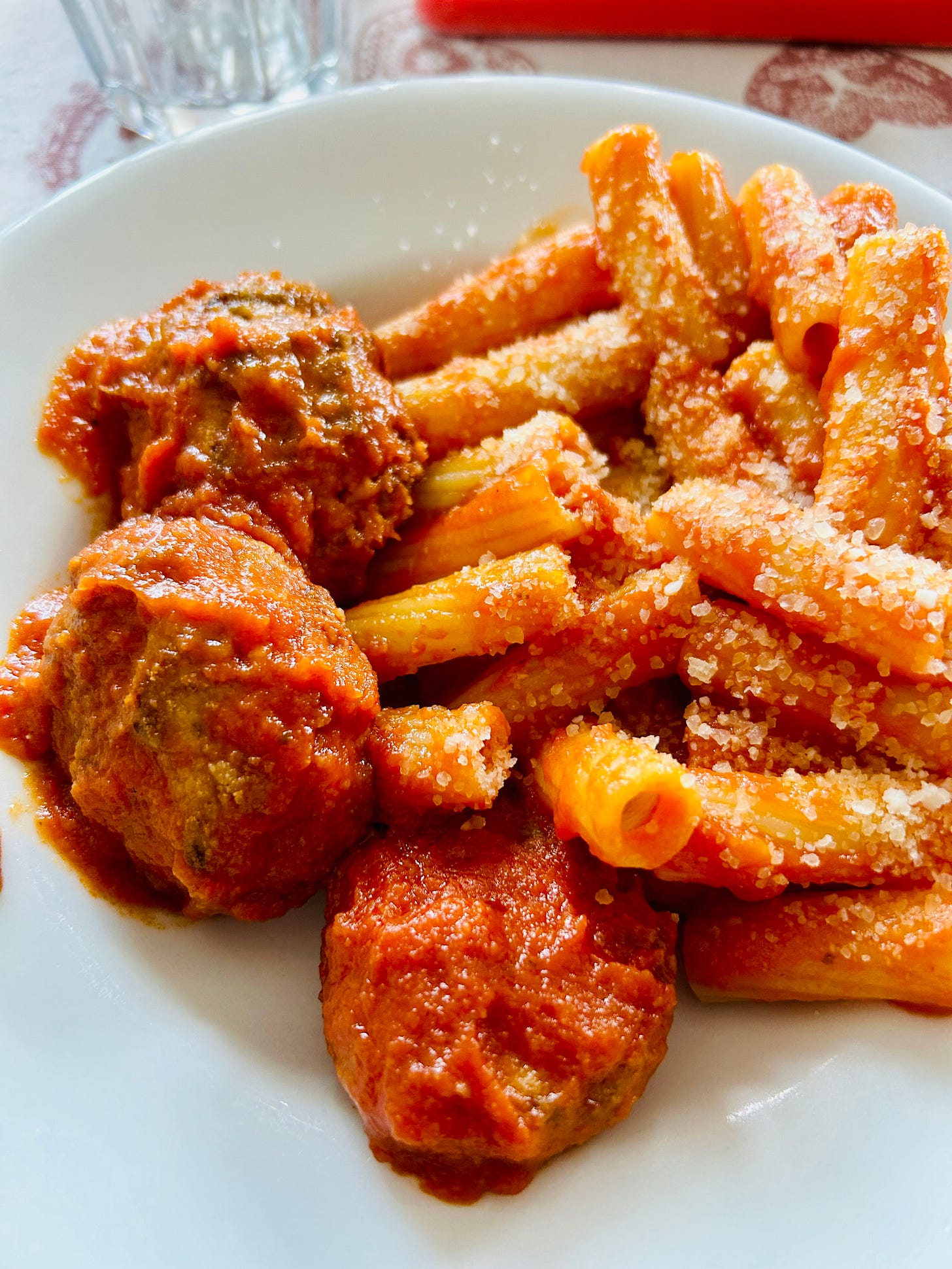On Anchovies, Emigration, Campanilismo and rice balls diatribes.
Recipe - My mother’s famous Polpette di Acciughe
This is a recipe that has become a staple in my mother’s kitchen, though it didn’t come from a long-standing family tradition.
There’s a powerful sense of community that forms around immigrants—and the same can happen with internal migration, when people move from one region to another within the same country. Italy, with its fractured history and patchwork identity, has cultivated an extraordinary level of regional diversity, especially when it comes to food. Dialects and recipes can shift dramatically within just a few kilometers. And then, of course, there’s campanilismo.
Campanilismo is that deeply Italian sentiment of loyalty to your local campanile, your parish bell tower. It’s the idea that your true community is defined by the sound range of that bell—and everyone beyond it is, well, not really to be trusted and possibly an intruder. I’m exaggerating, of course. But only slightly. You see it everywhere: in sports rivalries, in beyond parody neighbourhood feuds, and especially in the fierce debates about food. Two neighbouring towns might argue for decades about the “true” way to make a particular dish, forgetting that in Italian food culture, there’s no such thing as the way. If anyone claims otherwise, they’re lying—or worse, trying to freeze a living tradition.
Italian food culture, like traditional music, is passed down aurally. It changes hands, it changes shape and it constantly redefines itself. If you try to preserve it too tightly, it risks becoming fossilised, codified, and eventually, academic.
That’s why campanilismo—as much as it’s part of our cultural DNA—is one of my least favourite aspects of the Italian mindset. It’s that attitude of: “If you’re one of us, I’ll give you everything; if you’re not, I’ll start by distrusting you.” I love the sense of family, the deep loyalty, the warmth. But the suspicion of outsiders—that part I struggle with. It’s at the root of a lot of the racism in Italy, which is, let’s be honest, very very real!
Historically, I can probably imagine where this mentality came from. Almost every Italian region was repeatedly invaded, conquered and ransacked by the “empire of the day”.
Interestingly enough when Italians meet abroad some of these boundaries blur. The further we are from home, the more we realise what connects us.
I saw this when I lived in the Netherlands. You start to find common ground with fellow Italians from all over the country, and often that common ground is food. Not the very regional stuff, but the products of industrialisation—the foods that became staples across Italy from the 1960s onward. We don’t have food capitalism on the scale of the U.S., but we do have shared icons: parmigiano reggiano, prosciutto di Parma, the moka coffee maker, panettone and pandoro at Christmas, Nutella… These things can make any Italian feel instantly at home!
But back to regionality, even within Sicily, the diversity is astonishing. The most heartfelt hatred is between the people from Palermo and the people from Catania. In food terms this translates in one of the biggest and silliest culinary debates ever: arancina versus arancino. This glorious rice ball—stuffed, breaded, fried perfection—is called arancina (feminine) in Palermo and arancino (masculine) in Catania. They differ slightly in shape too. The debate has gone on so long that it even involved the Accademia della Crusca, Italy’s venerable authority on language. Yes, a linguistic war over rice balls. But I digress…
When Sicilians moved north, to places like Turin, they built new communities. My mother learned this recipe from a Sicilian woman who helped her clean the house in the 1980s. I’ve watched her learn recipes like this many times—never with pen and paper. She listens, observes, then goes home and makes it her own. No measurements, just intuition. A occhio, as we say.
This recipe has evolved in her hands over the years. What follows is a snapshot of one particular day we made these polpette together. It’s not set in stone. It’s not “the” way. It’s just our way, that day. I invite you to learn it, and then let it become yours.
It is actually quite similar to my aunt Graziella’s recipe for meatballs, except we are using fresh anchovies for this, and they add a lot of fishy Mediterranean umami to this dish. These polpette are incredibly tasty as they are but work really well with pasta too. And yes, there’s cheese in the meatballs, so if you see pecorino on pasta with fish here… don’t panic. If you are stuck for fresh anchovies, this will work also with other oily fish, such as mackerel and sardines. Try to ask your fishmonger to clean the anchovies for you, as it is a bit of a thankless job.
This is a post for my paying subscribers and includes the full recipe in downloadable PDF form, along with a musical pairing playlist to cook by. If you enjoy my stories and food, consider supporting Cooking by Ear by subscribing (free or paid)
Polpette di acciughe (Sicilian Anchovy Polpette)
Makes about 18–20 meatballs, depending on size
Ingredients
Keep reading with a 7-day free trial
Subscribe to Cooking by Ear to keep reading this post and get 7 days of free access to the full post archives.

